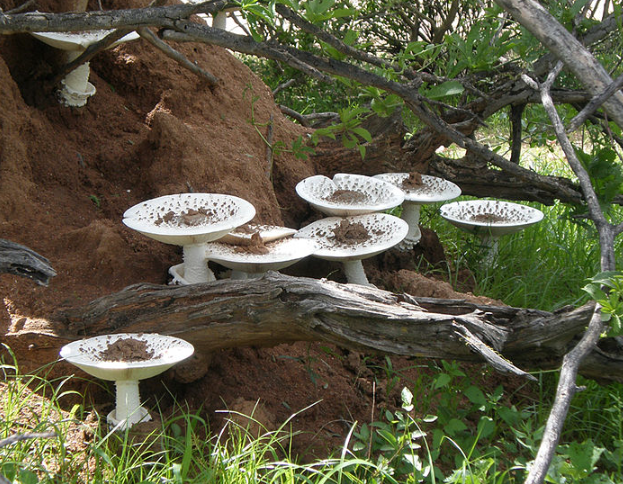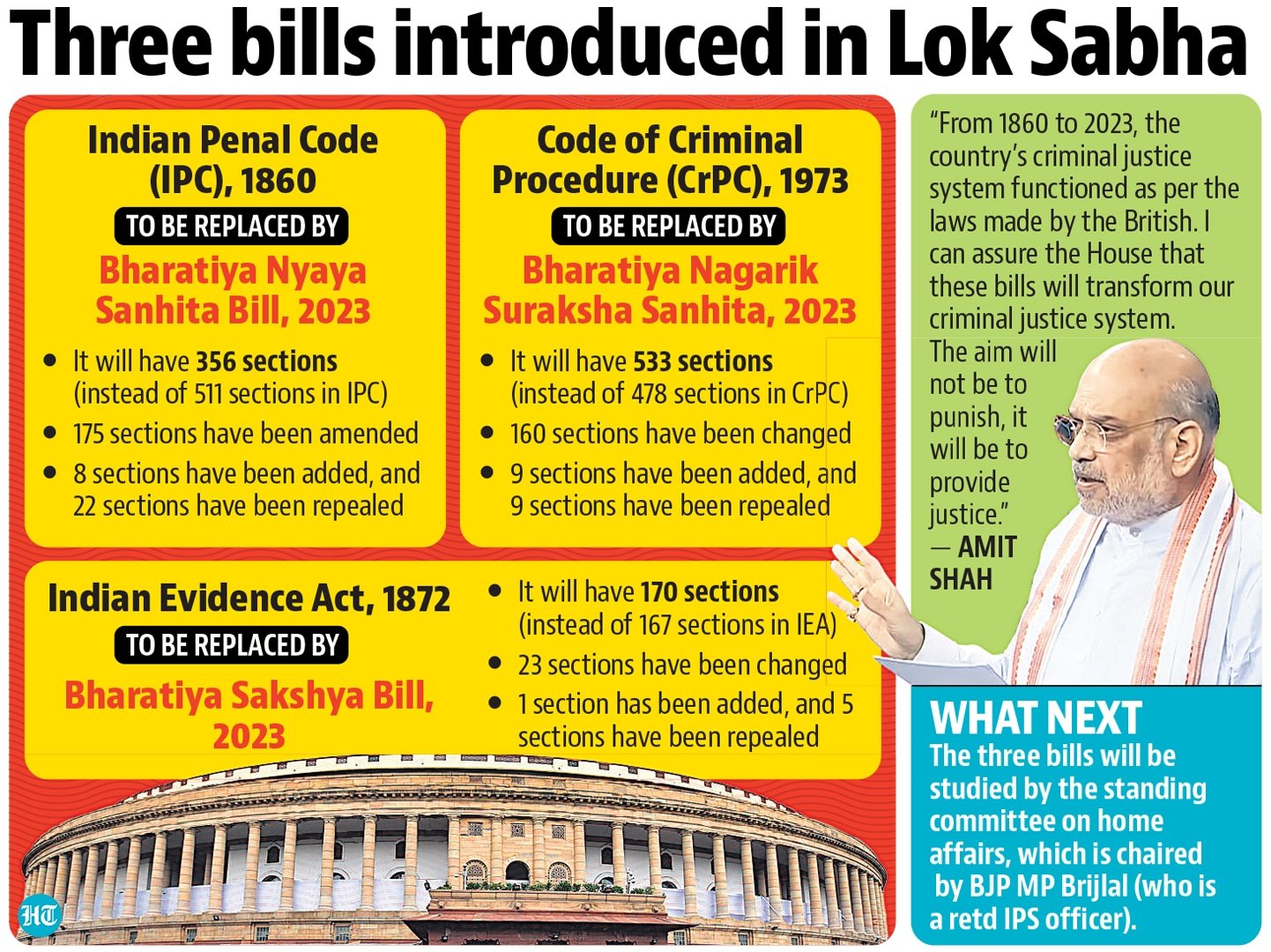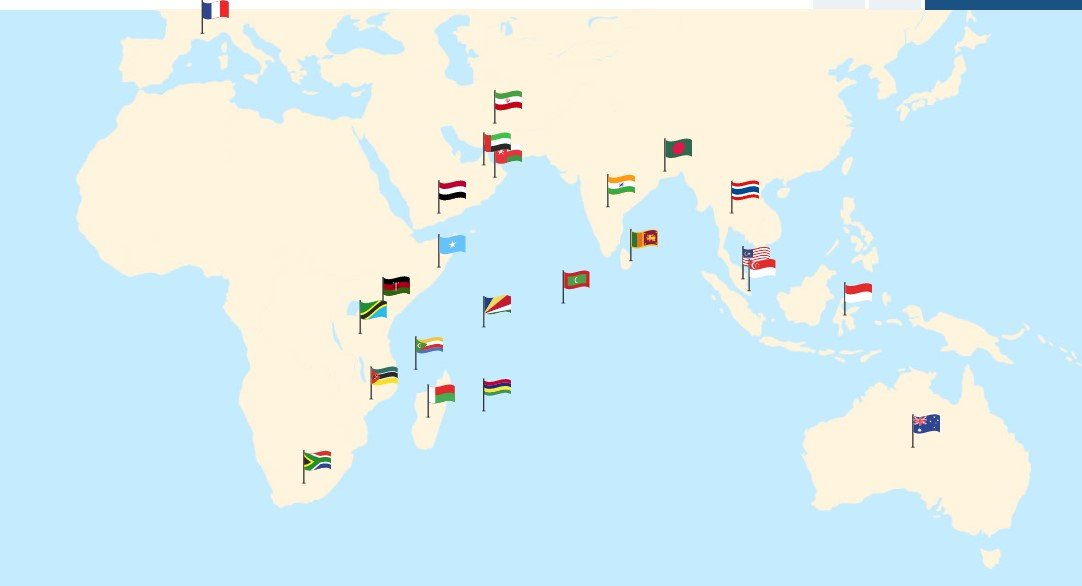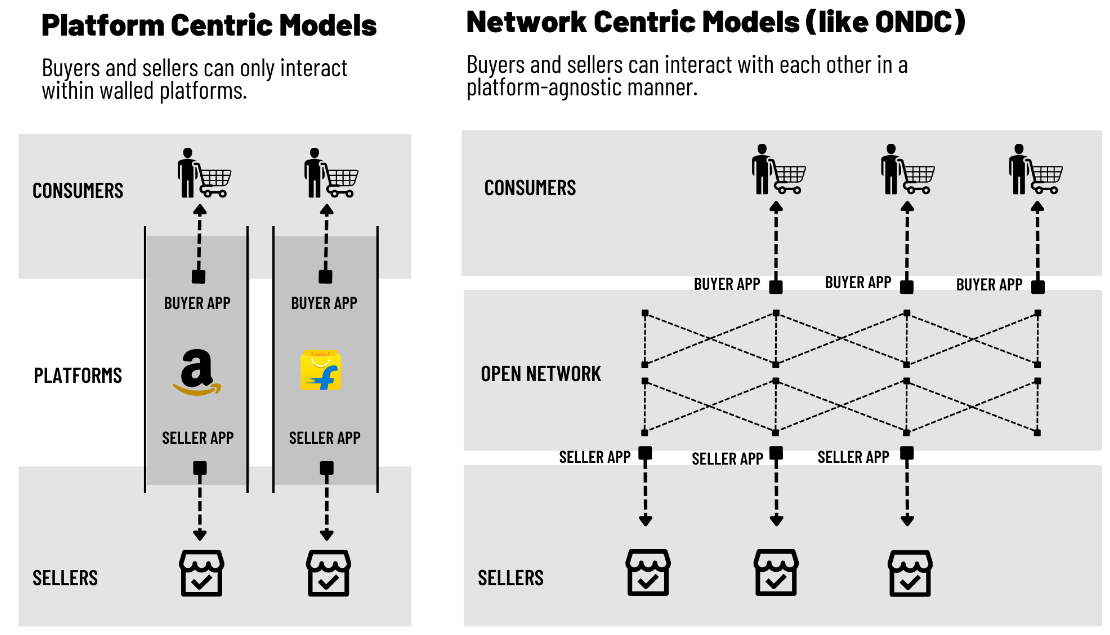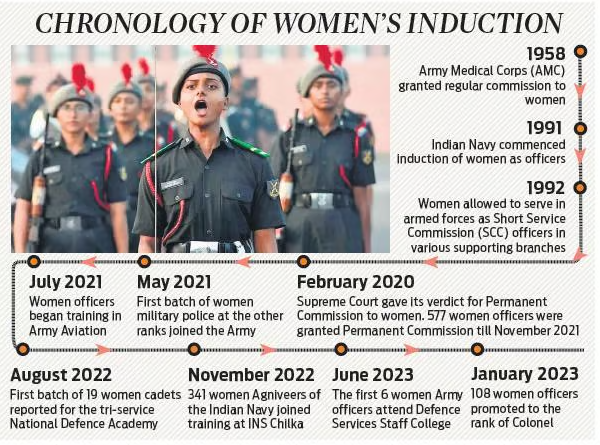
Current Affairs November 24, 2023: Guru Tegh Bahadur, Social Audit, Mesosphere Depleting Ozone Hole, Depletion of Antarctic Ozone Hole, Global Carbon Budget, Hyper-Personalised Banking, Microfinance, India’s goal of $5 trillion Economy, International Space Station
Subscribers of "Current Affairs" course can Download Daily Current Affairs in PDF/DOC
Subscribe to Never Miss an Important Update! Assured Discounts on New Products!
Must Join PMF IAS Telegram Channel & PMF IAS History Telegram Channel
{GS1 – MIH – Personalities} Guru Tegh Bahadur
- Context (PIB): President Murmu paid tributes to Sikh Guru Tegh Bahadur on his martyrdom day.
- Guru Tegh Bahadur was the ninth Sikh Guru.
- He was born in Amritsar on April 21, 1621, and became leader of Sikhs from 1665 until his death in 1675.
- He wrote extensively and many of his hymns are part of Guru Granth Sahib (main text of Sikhism).
- He was killed on the orders of the Mughal emperor, Aurangzeb because he resisted the forced conversion to Islam.
- Gurudwara Sis Ganj Sahib and Gurdwara Rakab Ganj Sahib in Delhi mark the places of execution and cremation of Guru Tegh Bahadur.
{GS2 – Governance – Transparency} Social Audit
- Context (TH): Of 34 States and UTs, only six states have completed the social audit of work done under the Mahatma Gandhi National Rural Employment Guarantee Scheme (MGNREGS).
- Social Audit is a process where citizens participate in the assessment of social, economic, environmental and ethical performance of programs and functioning of government departments.
- It is based on the principle that democratic local governance should be carried out, as far as possible, with the consent and understanding of all concerned stakeholders.
|
Social Audit as Tool of Empowerment
- Participative governance through debates, deliberation, idea sharing, and participatory local planning.
- Improves efficiency and effectiveness: Enables government to identify problem areas and take corrective measures in a time-bound manner.
- Enhances transparency: For eg. Social Audits have been instrumental in exposing “Ghost beneficiaries” and “Ghost works” in the case of MGNREGA.
- Feedback & Grievance redressal: For eg. “Jan Sunwaai” (public hearing initiatives) organized by MKSS allowed the most marginalized sections to highlight their grievances.
- Boosts professionalism in public bodies by forcing Panchayats to keep proper records and accounts of the spending made against the grants received from the government.
Key Challenges
- Poor awareness and capacity building of citizens and gram sabhas.
- Poor maintenance of records and accounts.
- Resistance from bureaucracy to share information.
- Absence of central policy/statutory backing to make social audits mandatory.
- No Action Taken Reports (ATRs) on findings of social audit and no publication in local languages.
- Ineffective functioning of Gram Panchayats and rampant corruption. For eg. forging muster rolls, bills, ghost beneficiaries, etc.
- Lack of independence of Social Audit Units (SAUs); several SAUs do not have adequate staff to cover all the panchayats even once a year.
Way Forward
- Institutionalisation of social audits by legal backing. For eg. Meghalaya’s social audit law.
- Mainstreaming recordkeeping by digitizing records and publishing ATRs on government websites for public access.
- Establishing CAG as a nodal agency for social audits and developing a panel of PRI auditors, trained and certified by CAG (eg. School teachers, accountants, NGOs etc.)
- Behavioural training and civil services reforms to initiate a process of mindset change from “Authoritative and Secretive” to “People Centric and Participative”.
- Strengthening of other tools of citizen’s empowerment like RTI, Citizen Charter, e-Governance, Whistle Blower and Witness Protection Act, etc.
For details on MGNREGS topic > PMF IAS August Monthly Magazine.
{GS2 – Polity – IC} Article 311
- Context (IE): The J&K government has terminated four government employees for being a “threat to the security of the state”.
- The employees have been terminated under Article 311(2)(C) of IC.
- Article 311(2)(C) of IC allows the government to terminate employees without ordering an inquiry into their conduct or giving them an opportunity to explain their position if the “President or the Governor is satisfied that it’s not in the interest of the state’s security to conduct an inquiry.
Related Constitutional Provisions
- Article 311 of IC: Dismissal, removal, or reduction in rank of persons employed in civil capacities under the Union or a State.
- A member of a civil service of the Union or State or an all-India service cannot be dismissed or removed by an authority lower than the one that appointed them.
- A member of a civil service of the Union or State or an all-India service cannot be dismissed, removed, or reduced in rank without an inquiry. The individual must be informed of the charges against them and be given a fair opportunity to defend themselves. In the following conditions, the person may not get the opportunity to defend.
- When a person is dismissed, removed, or reduced in rank due to his conviction on a criminal charge.
- When the authority responsible for dismissal, removal or reduction in rank deems it impractical to conduct an inquiry.
- If the President or Governor is satisfied that it’s not in the interest of the state’s security to conduct an inquiry.
{GS3 – Envi – Degradation} Mesosphere Depleting Ozone Hole
- Context (DTE): The Antarctic ozone hole is larger and thinner and may take longer to recover due to the mesosphere.
Ozone Layer
- The ozone layer is ozone gas (a trace gas) in the stratosphere (between 15 and 50 km).
- Almost 90% of ozone is in the stratosphere.
- An ozone hole is an area where ozone levels drop below the historical threshold of 220 Dobson Units (DU measures ozone concentrations).
Annual Ozone Hole Over Antarctica
- The size of the ozone hole over Antarctica fluctuates each year, opening in August and closing again in November or December.
- Ozone hole opens each year because of stratospheric winds.
- Each year, stratospheric winds form a strong polar vortex over Antarctica.
- The winds in the polar vortex are isolated from the rest of the surrounding atmosphere.
- Cold temperatures inside the polar vortex favour the formation of polar stratospheric clouds (PSCs).
- PSCs provide surfaces for chemical reactions that release ozone-depleting substances (ODSs).
- In the spring, when the sunlight returns to Antarctica, the ODSs are released from the PSCs and begin to destroy ozone molecules.
Polar Vortex
|

Depletion of Antarctic Ozone Hole
- The Montreal Protocol report of 2022 confirmed the phase-out of nearly 99% of banned ODSs.
- But despite this, the core of the Antarctic ozone hole reduced by 26% from 2004 to 2022.
Montreal Protocol on on Substances that Deplete the Ozone Layer
|
Mesosphere’s Role in Antarctic Ozone Hole Depletion
- Antarctic ozone hole sits within the polar vortex.
- Within this vortex, the Antarctic air from the mesosphere (the atmospheric layer above the stratosphere) falls into the stratosphere.
- The intrusion of mesosphere air brings nitrogen oxides (NOx) in contact with stratospheric ozone.
- The NOx destroy ozone molecules and increases the size and severity of the ozone hole.
|

Other Factors Contributing to Antartic Ozone Hole Depletion
- Springtime temperature and wind patterns
- Aerosols from wildfires
- Volcanic eruptions: Eruptions at Hunga Tongain Tonga is behind this year’s big ozone hole.
For details on Ozone Hole and Initiatives to Recover Ozone Layer > {GS3 – Envi – Air Pollution} Large Ozone Hole Over Antarctica
{GS3 – Envi – UNFCCC} Global Carbon Budget
- Global carbon budget refers to the maximum cumulative global anthropogenic CO2 emissions that can be released, from the pre-industrial era to when such emissions reach net- zero.
- It is necessary to limit global warming to a specific level with a certain probability.
- The remaining carbon budget indicates how much CO2 could still be emitted while keeping temperature rise to the specified limit.
Present Status of Global Carbon Budget
- Intergovernmental Panel on Climate Change 6th Assessment report (IPCC AR6) has shown that the world warmed by a staggering 1.07°C until 2019 from pre-industrial levels.
- So, almost 4/5th of the global carbon budget is depleted.
- Only a fifth remains to meet the Paris Agreement target of limiting global warming to under 2°C, preferably 1.5°C.
Who is Responsible for Cumulative Global Emissions?
- As per IPCC AR6, developed countries have disproportionately claimed a larger share of the global carbon budget so far.
- South Asia, including India, has contributed only about 4% to historical cumulative emissions, despite representing nearly 24% of the global population.

Importance of Global Carbon Budget for India
- Global carbon budget, tied to a specific temperature limit, is a finite resource shared by the world.
- Its sharing should be consistent with the foundational principles of the UNFCCC.
- The UNFCCC acknowledges that developing nations have low per capita emissions and anticipates their emissions will increase inevitably with development.
- Therefore, the UNFCCC recognises the ‘common but differentiated responsibilities and respective capabilities’ (CBDR-RC) principle.
- This principle means different States have different responsibilities and respective capabilities in tackling climate change.
- In a dwindling global carbon budget, failing to strategically leverage our available resources may expose us to new colonial tactics by developed countries.
- So, India must view the ‘fair share of the carbon budget’ as a crucial national resource depleting rapidly from over-exploitation by developed countries.
- At COP28, India must demand a fair share of its carbon budget or equivalent reparations to bring about fairness within the global order.
- Because only development brings an assurance to tide over the roller coasters of climate change.
{GS3 – IE – Banking} Hyper-Personalised Banking
- Context (TH): RBI deputy governor said the banks will have to shift from isolated service provisions to hyper-personalised embedded banking.
- Hyper-personalised banking uses data and analytics to provide customers with tailored products, services, and experiences.
- Banks can move beyond basic customer information to grasp individual needs and preferences through hyper-personalised banking.
Key Features of Hyper-Personalised Banking
- Data analytics and AI: Analysis of customer data like transaction history, spending patterns, social media activity, etc.
- Real-time insights: For e.g., alerting for suspicious transactions, providing personalised promotions, and suggesting budget adjustments.
- Personalised recommendations: Suggestions and offers based on individual financial goals.
- Customised user interfaces for easy access: For e.g., personalised dashboards.
- Chatbots and virtual assistants
- Advanced Security Measures: For e.g., biometric authentication, behavioural analysis, etc.
- Integration of third-party services: For e.g., integrating with financial wellness apps, expense tracking tools, or other fintech solutions.
- Predictive analytics: For e.g., offering pre-approved loans or credit increases when needed.
- Dynamic and personalised pricing for banking services: Based on the customer’s relationship, financial behaviour, and other factors.
Isolated Service Provisions vs Hyper-Personalised Banking
| Feature | Isolated Service Provisions | Hyper-Personalized Banking |
| Approach | Traditional, product-centric | Data-driven, customer-centric |
| Focus | Providing a comprehensive range of products | Tailoring products and services to individual needs |
| Personalisation | Limited or no personalisation | Extensive personalisation based on data and analytics |
| Customer experience | One-size-fits-all | Personalised and relevant |
| Engagement | Lower customer engagement | Higher customer engagement and loyalty |
Concerns with Hyper-Personalised Banking
- Privacy concerns
- Data security concerns
- Perpetuate existing biases and inequalities in society
- Algorithmic bias concerns
- Transparency concerns
{GS3 – IE – Banking} India’s goal of $5 trillion Economy
- Context (TH): With India aspiring to become a $5 trillion economy, a look into whether India is prepared for New India.
- As per Union Budget 2023-24, India is the world’s fifth largest economy with a GDP of USD 3.5 trillion and is currently classified as a ‘developing nation’.
- As per Economic Survey 2022-23:
- India is expected to grow in the range of 6-6.8% for FY24, the fastest among major economies.
- India is the largest recipient of remittances in the world receiving US$ 100 bn in 2022.
- India is the sixth largest foreign exchange reserves holder in the world.
India’s achievements toward a $5 trillion economy
Economic Growth:
- India is currently the world’s fifth-largest economy in terms of nominal GDP and the third-largest based on purchasing power parity (PPP).
Poverty Alleviation
- Multi-dimensional poverty has fallen by 0.2 points over the period 2005-06 to 2019-21, a decline of more than 75%.
Education
- According to Census 2011, the literacy rate in India was around 74.04%, compared to 18.33% in 1951.
Healthcare
- From 1950 to 2023, life expectancy at birth rose from around 37 years to approximately 70 years.
- Infant mortality rate decreased from 146 in 1950 to around 27.
Infrastructure Development
- As of 2023, India has the second-largest road network globally, with over 63.73 lakh km of road network, including national highways and rural roads.
- In 2023, the percentage of households with electricity access is approximately 99.2%.
Technological Advancements
- India has become a global leader in the IT and software services sector with the industry contributing around 8% to India’s GDP.
- ISRO has successfully launched numerous satellites like Mangalyaan, Chandrayaan, Anti-SAT mission.
Challenges to the goal of $5 trillion economy
Inequality
- As per Oxfam, the top 10% of the Indian population holds 77% of the total national wealth.
- Approx 64% of GST collections came from the bottom 50% of the population while the top 10% contributed only 3% of GST.
- According to the Global Gender Gap Report 2022, India ranks 135th out of 146 countries in terms of gender equality.
- According to the India Inequality Report 2022 by Oxfam, only 31% of the rural population uses Internet as compared to 67% of the urban population.
- With a per capita income of $2,400, India ranks 149 among 194 countries in 2022, with Japan’s per capita income standing at $34,000 and China’s at $13,000.
Education
- According to the Annual State of Education Report (ASER) 2022, basic reading comprehension of school kids in all classes has fallen to levels prior to 2012.
- As per India Skill Report 2023, only 49% of Indian youth are employable.
Healthcare
- India has a doctor-population ratio of 1:1,445, well below the World Health Organization’s recommended ratio of 1:1,000.
Governance and Corruption
- India was ranked 85th among 180 nations in the 2022 Corruption Perceptions Index of the Transparency International.
Way Forward
- Build a digital superhighway by enhancing broadband accessibility and digital literacy, underpinning the Digital India initiative for tech-driven growth.
- Fostering export competitiveness through policy incentives, upgrading trade Infrastructure, and forging comprehensive bilateral trade agreements.
- Agrarian transition by implementing precision agriculture’ and climate-resilient farming practices to transform from subsistence to a globally competitive, sustainable, and profitable industry.
{GS3 – IE – Banking} Microfinance
- Context (TH): Finance Minister has cautioned NBFCs against lending as suggested by RBI.
- NBFCs are companies registered under the Companies Act and provide various financial services and products, including loans, insurance, and asset management, but do not have a banking license.
- Business areas: Business of loans and advances, acquisition of shares/stocks/bonds/debentures/securities issued by Government or local authority or other marketable securities of a like nature, leasing, hire-purchase, insurance business, chit business.
- Does not include: Institution whose principal business is that of agriculture activity, industrial activity, purchase or sale of any goods (other than securities) or providing any services and sale/purchase/construction of immovable property.
- Categories of NBFCs: Investment Company (IC), Asset Finance Company (AFC), Systemically Important Core Investment Company (CIC-ND-SI), Non-Banking Financial Company Micro Finance Institution (NBFC-MFI), Infrastructure Finance Company (IFC), Loan Companies (LC).
- Regulated by RBI under RBI Act, 1934.
Difference Between Banks and NBFCs
|
Basis of Comparison |
NBFCs |
Banks |
|
Meaning |
They provide banking services to people without holding a Bank License. |
It is government government-authorized financial intermediary which aims at providing banking services to the public. |
|
Regulated under |
Companies Act 2013 |
Banking Regulation Act 1949 |
|
Demand deposit |
Cannot be accepted |
Can be accepted |
|
Foreign investment |
Allowed up to 100% |
Allowed up to 74% for Private Sector Bank |
|
Payment and settlement system |
Not a part of the system |
An integral part of the System |
|
Maintenance of Reserve ratio |
Not required |
Mandatory |
|
Deposit Insurance Facility |
Not available |
Available |
|
Credit creation |
NBFC does not create Credit |
Bank create Credit |
|
Transaction services |
Cannot be provided by NBFCs |
Provided by Bank |
{GS3 – S&T – Space} International Space Station
- Context (IE): International Space Station (ISS) has completed 25 years.
- International Space Station (ISS) is a large spacecraft in low Earth orbit (LEO).
- It is the largest artificial satellite and is habitable.
- The ISS is a collaborative project involving multiple space agencies:
- NASA (the USA)
- Roscosmos (Russia)
- ESA (Europe)
- JAXA (Japan)
- CSA (Canada).
- The ISS’s construction began in 1998 with the launch of the Zarya module by Russia.
- It has been continuously inhabited since 2000. Among the first “live-in” astronauts were Bill Shepherd of NASA and Roscosmos cosmonauts Yuri Gidzenko and Sergei Krikalev.
- In 24 hours, it makes 16 orbits of Earth, traveling through 16 sunrises and sunsets.
- It travels at a speed of 8 km/second to maintain an orbit around the Earth.
- It orbits Earth at an average altitude of approximately 250 miles in every 90 minutes.
Scientific Experiments on the ISS have Benefited Life on Earth
- Microgravity research: To study the effects of microgravity on the human body and other materials.
- Space medicine research: To develop new treatments for medical conditions.
- Astronomy research.
- Earth observation research.
Future of ISS
Russia-Ukraine War
- The future of the ISS became uncertain due to the Russia-Ukraine war.
- European Space Agency withdrew from international collaborations with Russia.
- Russia also said it was leaving the ISS to build its own space station.
Independent Mark on space
- Old and new spacefaring nations want to make an independent mark on space.
- They include Japan, China, India, the UAE, etc.
|
Other Space Stations |
||
| Name | Agency | Remark |
| Tiangong space station | CMSA (China) | Operational |
| Lunar Gateway | NASA (the US), ESA (Europe), CSA (Canada), and JAXA (Japa) | Yet to be launched |
| Russian Orbital Service Station | Roscosmos (Russia) | Yet to be launched |
| Starlab Space Station | ESA | Yet to be launched |
| Bharatiya Antariksha Station | ISRO (India) | Yet to be launched |





![PMF IAS Environment for UPSC 2022-23 [paperback] PMF IAS [Nov 30, 2021]…](https://pmfias.b-cdn.net/wp-content/uploads/2024/04/pmfiasenvironmentforupsc2022-23paperbackpmfiasnov302021.jpg)
